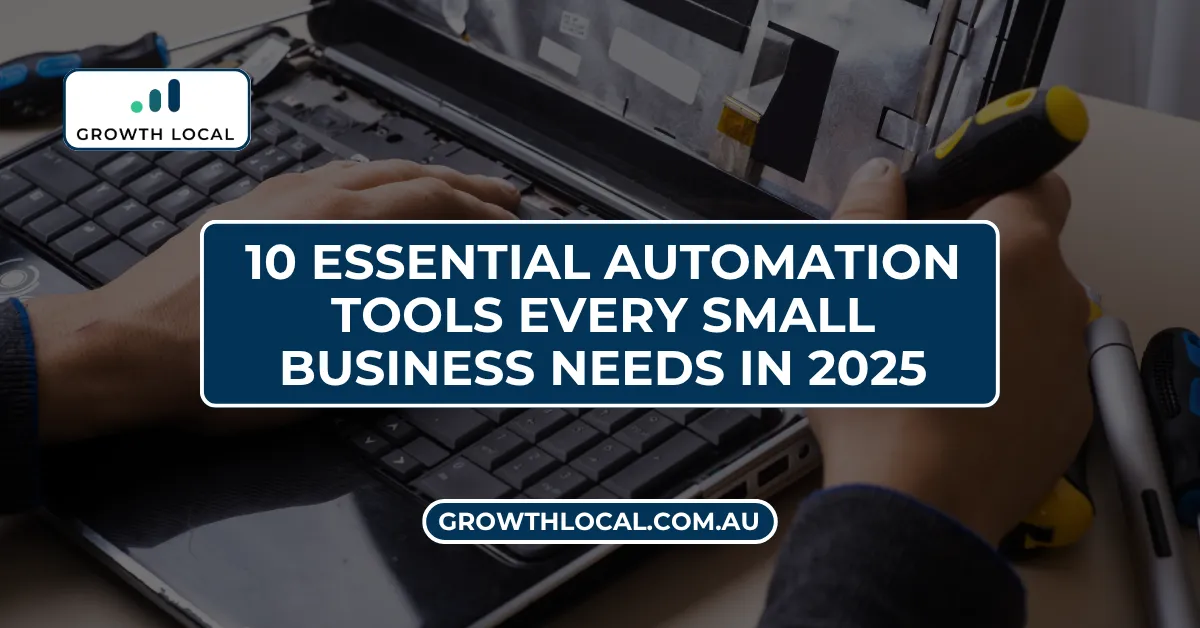
10 Essential Automation Tools Every Small Business Needs in 2025
If you own a small business in 2025, you're likely wearing more hats than you have hands. Between sales, marketing, admin, and customer service, your to-do list never seems to end.
That's where automation comes in—not to replace humans, but to get the dull, repetitive stuff out of the way so you can get on with what really gets results.
Here's the thing—small business automation tools are no longer a nice-to-have. It's the distinction between staying alive and growing.
The right tool can save hours per day, eliminate mistakes, and build improved customer experiences without hiring more staff.
So let's get specific. Below are 10 automation tools that can really make an impact for your company in 2025.
1. Zapier – The Connector of Everything
Zapier is duct tape for your software stack. It integrates apps such as Gmail, Slack, Xero, Google Sheets, and many more. Do you require fresh form submissions from your website in order for your CRM to immediately create a lead? Zapier can do that. Want invoices from Stripe to pop into a spreadsheet? Easy.
It’s not the flashiest tool, but it’s one of the best workflow automation tools you’ll find. The best part is that no coding is needed.
Use it for:
Business process automation
Establishing a connection between tools that are not naturally compatible.
2. Trello + Butler – Task Management on Autopilot
You’re probably already familiar with Trello, but the real magic comes with its built-in automation tool: Butler.
With Butler, you can automatically send tasks, move cards, add checklists, or even send Slack messages based on conditions.
Use it for:
Team task tracking
Repeating checklists
Onboarding workflows.
3. Mailchimp – Smart Email Marketing
Mailchimp has grown far beyond email. It's a one-stop marketing platform in 2025 that helps you categorise audiences, create email automations, and determine what works.
Regardless of whether you're sending welcome messages or abandoned cart reminders, Mailchimp makes email marketing not so much of a guesswork.
Use it for:
Customer engagement
Follow-ups
Email funnels.
4. ActiveCampaign – Sales + Marketing Automation
If you need something more sophisticated than Mailchimp, ActiveCampaign is something to consider. It combines sales automation, CRM, and email.
You can build automated paths that change depending on how the customer interacts with them, such as clicking a link, landing on a page, or opening an email.
Use it for:
Sales pipelines
Lead scoring
Targeted automations.
5. Calendly – Automated Scheduling Without the Back-and-Forth
Face it—scheduling meetings via email is time-consuming. Calendly allows users to choose a time according to their current availability. It integrates with your calendar, prevents double booking, and even accepts payments for a meeting beforehand.
Use it for:
Client appointments
Sales calls
Interviews.
6. QuickBooks – Finance Without the Headaches
Automation software for small businesses doesn't begin and end with marketing and admin. QuickBooks automates invoicing, tracking expenses, and financial reporting. It even integrates with your bank accounts and works with third-party tools such as Stripe or PayPal.
Use it for:
Bookkeeping,
Reports are ready for tax.
Recurring invoices.
7. Hootsuite – Social Media, Scheduled
You don't need to log in to Instagram and LinkedIn every day to remain active. With Hootsuite, you can manage analytics, track mentions, and schedule posts from a single location.
Use it for:
Content planning B
Brand monitoring
Time-saving social media workflows.
8. HubSpot – CRM That Actually Helps You Sell
HubSpot is not only for large corporations. One of the best small business automation options available is its free CRM. You can automate follow-ups, monitor sales activities, and even create basic workflows that react to customer behaviour.
Use it for:
Lead management,
Email sequences
Sales monitoring.
9. Notion + Automations – Build It Your Way
Notion is the Swiss Army knife of productivity. Add to it database automations and integrations (particularly through Zapier), and it's a versatile system for tracking projects, planning content, or even HR.
Use it for:
Custom workflows
Internal documentation
Productivity dashboards.
10. ClickUp – Everything In One Place
ClickUp attempts to be the one-stop shop for task tracking, project management, docs, and automation. It includes automation capabilities that act based on status updates, deadlines, or other conditions.
It's perfect for small teams that desire fewer tools and more functionality in one place.
Use it for:
Sprint management
Repeatable processes
Project planning.
So, Which Tools Should You Start With?
Not every small business needs all ten. The right mix depends on what you’re trying to automate—whether it’s marketing, operations, or admin tasks.
But here’s a good rule of thumb:
If you’re constantly doing the same things over and over, start with Zapier or ClickUp.
If emails and follow-ups are falling through the cracks, look into Mailchimp or ActiveCampaign.
If your schedule is chaotic, Calendly will clean that up fast.
If you don't want to lose a beat when it comes to cash, QuickBooks is a good bet.
The best workflow automation tools are not about saving time. They enable you to arrive more reliably, stress less, and deliver improved experiences for your customers, without exhausting your team.
And that's the point.
Final Thoughts
Small business automation tools are not limited to tech-savvy entrepreneurs or giant corporations. The correct tools enable you to operate lean, remain competitive, and concentrate on the tasks that matter most.
Ready to streamline your company and end drowning in tasks?
Explore Growth Local's services to discover automation solutions that actually suit your business. Let's get your tech stack working for you, not against.


